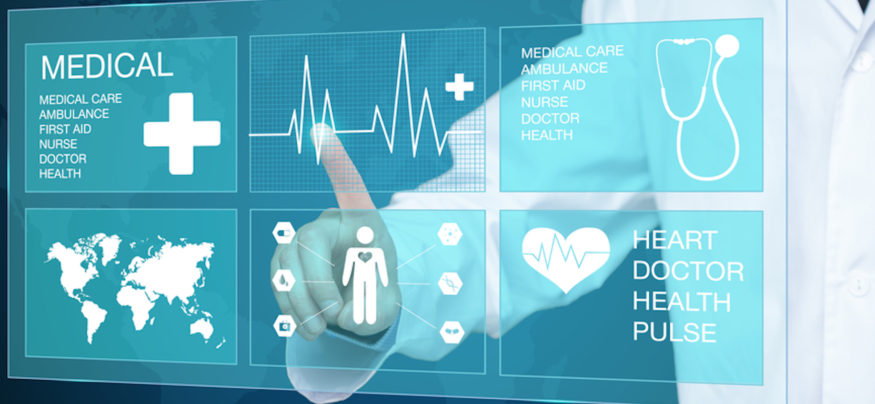Healthcare CIOs have been moving up in the executive pecking order for years now. As technology provides new ways to enhance the patient experience, cut costs, streamline workflows and boost productivity, the CIO role has become more important and strategic than ever.
With greater responsibility, bigger budgets and the need to comply with ever-changing government regulations, healthcare IT leaders will have a lot on their plates in 2017. But CIOs can shine by offering creative and secure solutions to their organizations’ greatest business challenges.
The Changing Role of the CIO
Healthcare companies are more likely to increase IT spending in 2017 than businesses in other industries, according to a recent Harvey Nash/KPMG CIO survey of 190 healthcare industry CIOs. Among these leaders, 52 percent reported increased IT budgets, while 35 percent anticipate unchanged budgets. By comparison, 45 percent of CIOs in other industries reported budget increases and 33 percent reported no change.
This makes perfect sense. Like all businesses, healthcare organizations need productive workers, efficient workflows and satisfied customers. They’re increasingly looking to mobile technology and cloud-based solutions for help meeting these objectives. But healthcare companies also face unique challenges, such as handling highly sensitive data and complying with strict government regulations on practically every aspect of their businesses.
Healthcare IT Coming Around to Mobile and Cloud
These concerns have kept healthcare organizations from embracing digital technology at the same rate as other industries. As mobile and cloud solutions become increasingly secure, however, and changing government regulations make way for new healthcare IT solutions, organizations are gearing up for a digital transformation with CIOs at the helm.
Healthcare industry CIOs aren’t just commanding bigger budgets. They’re also being asked to think bigger and set a vision for the future of technology in their organizations. The survey reported that 80 percent of healthcare industry CIOs see their role becoming more strategic, compared to 67 percent in all other industries. Still, only half of respondents reported they had a digital business strategy in place, while another 39 percent were currently working on creating such a strategy.
As more CIOs embrace their new roles in 2017, these numbers will undoubtedly go up, and digital strategies will increasingly focus on two key trends in healthcare IT: mobility and cloud solutions.
Keeping patient data secure is critical.
Read this white paper to learn how to securely access healthcare data on mobile devices. Download Now
Concerns Around Cloud Adoption
While other industries have embraced mobility and cloud-based solutions, most healthcare organizations have only begun to dip their toes into the water. Having already invested in legacy systems and electronic health records (EHRs) that aren’t yet optimized for cloud or mobile, transitioning to new technology can seem daunting. Then there’s the ever-present concern around data security and compliance issues.
When asked about their top challenges in cloud adoption, 55 percent of CIOs in the survey cited “data loss and privacy risk,” 46 percent named “integration with existing architecture” and another 42 percent listed “legal and regulatory compliance issues.”
But the times, they are a-changing. According to a recent poll by The Economist Intelligence Unit, 51 percent of healthcare executives believe the cloud will be a moderate or major factor in the upcoming year, while 81 percent of executives believe it will happen within three years.
The Future of Healthcare IT Is Now
Healthcare providers are ready to jump on the cloud bandwagon now because providers are offering greater security than most organizations can achieve on their own. And with the HIPAA Omnibus Rule now making cloud providers liable for HIPAA violations, they have an even greater stake in securing healthcare data.
Narinder Singh, co-founder of cloud services provider Appirio, recently wrote about this issue for Diginomica. “Recently attackers have relentlessly targeted hospitals with ransomware,” he wrote. “Each hospital defends against these problems most likely without the expertise or resources necessary. Cloud solution providers have not had similar issues because protecting against such attacks is core to their business model.”
Moving data and workloads to the cloud will enable healthcare organizations to scale their businesses, trim costs associated with maintaining their own servers and data recovery centers, and enable more mobile solutions for their teams and patients.
Of course, protecting data in the cloud isn’t the only concern. Healthcare organizations must also secure the mobile devices their teams use to access cloud-based apps and databases by training staff to use them safely, employing mobile device management solutions and investing in devices that have top-notch security features.
The future of technology in healthcare is now, and 2017 will be the year more and more CIOs usher their organizations into a more productive and profitable way of working.
More and more healthcare organizations are pushing mobile adoption among patients. But in order to be successful, they should become familiar with these five key user types.








